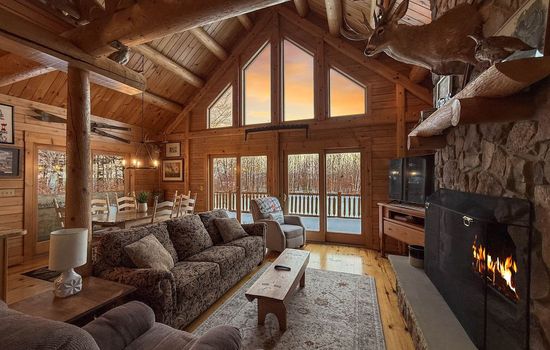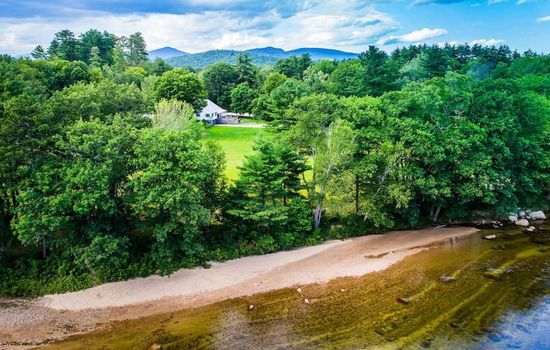The visitor center at Maine Wildlife Park offers information about the park’s wildlife and exhibits. It operates daily from 9 AM to 4 PM, providing guests with resources to enhance their experience.
Entrance fees are typically around $10 for adults and $7 for children. Parking is free for all visitors.
From Portland, take I-95 North for approximately 30 miles, then merge onto ME-25 East. Continue for about 10 miles, following signs to your destination, where the beauty of Maine’s wildlife awaits.
Maine Wildlife Park offers designated RV and motorcycle parking, along with accessible spaces for visitors with disabilities. Cyclists can conveniently use bike racks available on-site.
Accessibility & permits
Emergency
- Cell service availability:Full
Information not accurate?
Help us improve by making a suggestion.
Maine Wildlife Park offers an enchanting escape into the heart of New England’s natural beauty. Set against a backdrop of lush woodlands and serene ponds, this sanctuary showcases the state’s diverse wildlife in a setting that feels both intimate and expansive. Visitors can stroll along winding paths, encountering native species such as moose, black bears, and bobcats, all while learning about their habitats and conservation efforts.
The park emphasizes education and engagement, making it a perfect destination for families and wildlife enthusiasts. Interactive exhibits and guided tours provide deeper insights into the lives of these magnificent creatures. The experience is enhanced by the park’s commitment to rehabilitation, as many animals here have been rescued and are unable to return to the wild.
As you wander through the park, the sounds of nature envelop you, creating a tranquil atmosphere. Maine Wildlife Park not only showcases the splendor of its inhabitants but also fosters a profound appreciation for the natural world, making it a must-visit for those seeking connection and inspiration.
Top 3 Facts about Maine Wildlife Park
In Maine, the rare sighting of the Eastern Hognose Snake, known for its dramatic defensive behavior, captivates wildlife enthusiasts, while the migration of the American Eel, which travels thousands of miles from freshwater rivers to the Sargasso Sea to spawn, showcases the remarkable journeys of endemic species.
Maine is home to unique microclimates, where certain areas experience significantly different weather patterns due to geographical features; for instance, the coastal regions can have milder winters compared to the inland areas, creating diverse ecosystems and influencing local wildlife behavior and habitat preferences.
Home to unique wildlife experiences, this park features the first-ever designated trail for observing rehabilitated animals, bizarrely named “Squirrel’s Secret Stash,” while enforcing unusual rules like prohibiting outside food to protect the animals and banning loud noises to maintain a serene environment.
Family programs
- Junior Ranger
- Ranger-led Tours
- Self-guided Tours
- Workshops & Hands-on Activities
- Living History & Cultural Demos
- Scavenger Hunts
- Night Sky & Astronomy
- Family Camping & Overnight
- Volunteer & Stewardship
- Youth Conservation
- Scouting Partnerships
- Virtual Junior Activities
- Arts & Crafts
- Water-based Adventures
Travel Tips
Plan Ahead
Planning ahead is essential for a successful visit to this wildlife haven. Check the seasonal hours and special events online to make the most of your trip, and consider packing a picnic to enjoy amidst the natural beauty. Arrive early to avoid crowds and maximize your time exploring the diverse habitats and educational exhibits that showcase Maine’s unique wildlife.
Pack Appropriately
When visiting Maine’s wildlife attractions, pack layers to adapt to the region’s unpredictable weather. Early mornings can be crisp, while afternoons may warm up significantly, so include a lightweight rain jacket and sturdy footwear for exploring the trails. Don’t forget binoculars to catch glimpses of the diverse fauna that thrives in this unique ecosystem, enhancing your experience amidst the stunning natural backdrop.
Respect Wildlife
When visiting, prioritize respecting the natural habitats of the diverse wildlife. Keep a safe distance from animals, refrain from feeding them, and stay on designated paths to minimize your impact. Observing animals in their natural behaviors enhances your experience while protecting their well-being, ensuring future generations can enjoy the beauty of Maine’s rich ecosystems.
Stay Informed
Before your visit, check the weather forecast, current temperatures, and any fire bans or notices. Familiarize yourself with emergency contact information and inform someone of your destination and expected return time to ensure a safe and enjoyable experience.
Seasons
Spring breathes new life into Maine’s wildlife, offering visitors a vibrant tapestry of blooming gardens, active animals, and educational programs that showcase the state’s natural beauty.
Summer in Maine offers ideal weather for exploring the state’s natural beauty, with warm temperatures and abundant sunshine enhancing outdoor activities.
Experience the vibrant fall foliage and crisp air of September through November, as the park’s trails offer a picturesque backdrop for observing native wildlife in their natural habitats.
Experience the serene beauty of Maine’s winter landscapes as you observe native wildlife in their natural habitats, offering a unique and tranquil adventure during the colder months.
Information not accurate?
Help us improve by making a suggestion.
Where to stay
Frequently Asked Questions
Ready to dive into what Maine Wildlife Park has to offer? Let’s tackle some of the burning questions you might have as you plan your visit!
-
Maine Wildlife Park’s operating hours are typically from 9:00 AM to 4:30 PM daily from May to October, with extended hours during peak summer months.
-
Admission for adults is $10, while children ages 3-12 pay $7, and children under 3 are free.
-
Camping is not available at Maine Wildlife Park, but nearby campgrounds can be found for those looking to stay overnight in the area.
-
Pets are not allowed in the park to ensure the safety and comfort of the wildlife.
-
Yes, there are picnic facilities on-site, providing tables and areas for visitors to enjoy meals surrounded by nature.








